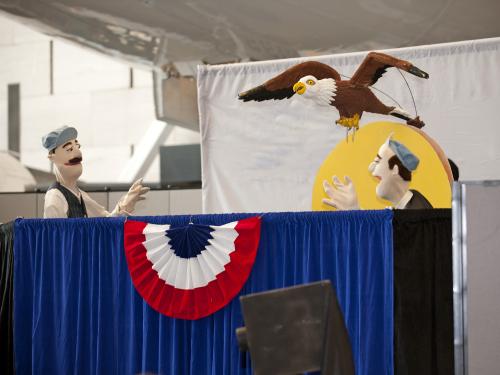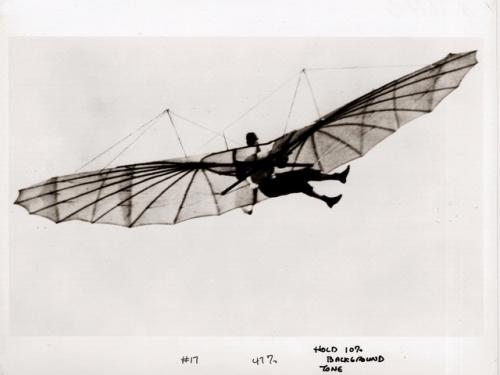
Stories of daring, stories of technological feats, stories of prevailing against the odds ... these are the stories we tell at the National Air and Space Museum. Dive in to the stories below to discover, learn, and be inspired.
Showing 611 - 620 of 698

February 05, 2012
The newest arrival in the National Air and Space Museum’s inventory of historic aircraft is the C-49 airship control car. Produced by Goodyear Tire and Rubber, it first took to the air as the pressure airship Enterprise (NC-16A) on August 23, 1934. The craft operated in the Washington, D.C. and New York metropolitan areas until November 1941, when it was flown back to Wingfoot Lake, Akron, Ohio to serve as a training craft. Early in WW II it patrolled northern Ohio checking on compliance with blackout regulations.

January 25, 2012
At the National Air and Space Museum, we tell stories in a number of ways — through objects, artwork, lectures, videos, planetarium shows — even puppets. Storytelling through puppetry can be a powerful educational tool for our youngest audiences in particular.

January 13, 2012
For those of us who study the very early history of the airplane, the sight and sound of a World War I rotary engine running is a thrill that leaves a lasting impression. To fly in a rotary powered World War I airplane is a transformative experience.

January 05, 2012
During the recently completed centennial of naval aviation (2011), there were many and varied tributes to the factual history of naval aviation. Nevertheless, we cannot forget that public perception of the armed forces is also a strong historical consideration.

December 24, 2011
In 1925, Mr. S. Claus was looking for a modern alternative to his old-fashioned reindeer-powered sleigh. Having once shown an interest in lighter-than-air flight in the form of hot-air balloons, Santa was favorably inclined when Goodyear came up with a solution — toy delivery via airship, in this case, Pilgrim I, renamed the Santa Claus Express for the occasion.

December 23, 2011
Twenty-five years ago, the staff of the National Air and Space Museum held its collective breath for nine days as a seemingly fragile, flying fuel tank made its way across oceans and continents in an attempt to become the first aircraft to fly around the world non-stop and unrefueled.

December 17, 2011
Airplane designers will tell you that the wing is the heart of an airplane. For conventional airplanes, it provides most of the lift generated by the airplane; the fuselage and tail contribute only a few percent of the overall lift of the airplane.

December 08, 2011
Stranded. Six days from its home port of San Francisco, a luxurious Boeing 314 flying boat, the Pacific Clipper, was preparing to alight in Auckland, New Zealand, as part of the airline’s transpacific service when the crew of ten learned of the Japanese attack on the U.S. fleet at Pearl Harbor on the morning of December 7, 1941.

December 07, 2011
In American military history there are few dates more familiar than "December 7th, 1941... a date which will live in infamy..." The Japanese attack at Pearl Harbor on that serene Sunday morning marked America's official entry into a global war that had been raging in Europe and throughout Asia for many years. Yet after the raid had ended, the wounded treated, and the dead counted, there remained pockets of hope that all was not lost that day.

December 02, 2011
When the floods in Thailand appeared in the news recently, my friends and colleagues recommended that I stay away. But how could I? It was only a 4.5 hour flight from China (where I would be attending the Lishui International Photography Festival November 5 - 9) and photographing the Bangkok (BKK) air traffic control tower at the Suvarnabhumi International Airport was a high priority on my “to do” list. Actually, the highest. It is the tallest freestanding air traffic control tower in the world at 132.2 meters (434 feet) and a major tower to include in my upcoming book and Smithsonian exhibition The Art of the Airport Tower.
